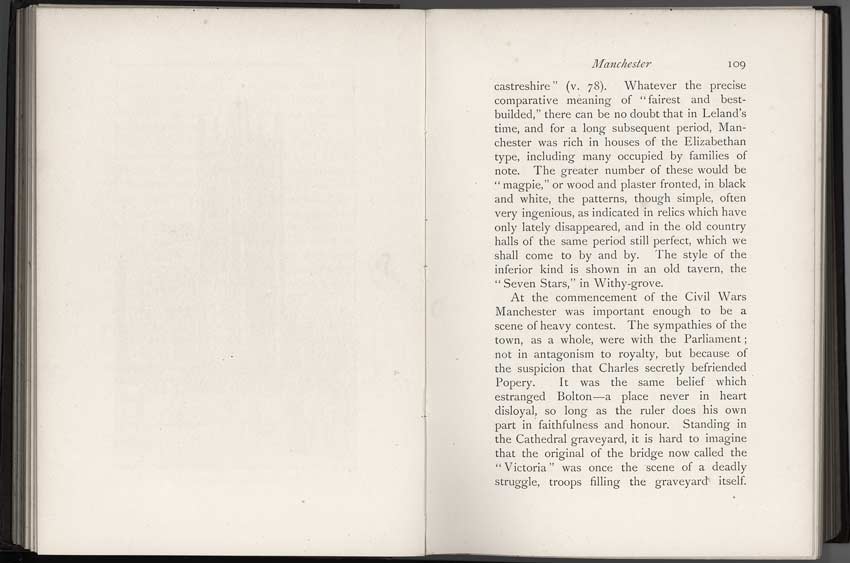
Scan and page transcript from:
LANCASHIRE - Brief Historical and Descriptive Notes
by Leo H. Grindon
Pub. 1892
pages 108-109 |
Manchester 109 castreshire" (v. 78). Whatever the precise comparative meaning of "fairest and best-builded," there can be no doubt that in Leland's time, and for a long subsequent period, Manchester was rich in houses of the Elizabethan type, including many occupied by families of note. The greater number of these would be "magpie," or wood and plaster fronted, in black and white, the patterns, though simple, often very ingenious, as indicated in relics which have only lately disappeared, and in the old country halls of the same period still perfect, which we shall come to by and by. The style of the inferior kind is shown in an old tavern, the "Seven Stars," in Withy-grove. |
